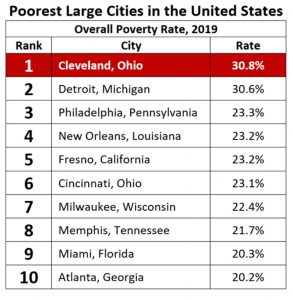YOUNGSTOWN, Ohio — The chance for school districts labeled as failing, to pull from under state control is in reach. This comes after state legislators opened a door through the state budget to allow failing districts to pursue a restorative pathway.
“I basically have a year to be able to do the work that I need to do and that’s going to be the thing that’s hard for me,” said Youngstown City Schools CEO Justin Jennings.
He’s been leading the district since 2019, with the support of an Academic Distress Commission.
While Jennings created a 10-year plan that would help the district shift from a failing district to one that excels, he’ll have to wait and see what the Board of Education chooses to keep and discard.
“The law specifically stated the board creates the plan in collaboration . . . not the CEO creates the plan. And I think that’s kind of where we’re going to get some things that are going to be issues because they’re going to be areas in which I think that it will be beneficial that the board may not necessarily agree with.”
ADC Chair John Richard believes the district’s seen improvement since Jennings’ arrival, but acknowledged the challenges ahead of exiting.
That includes figuring out how to see solid improvement with students moving in and out of the district.
“I think the challenge just to be sure that both families and students are engaged and they actually get them back in seats where if they’re doing an online option that, you know, they are showing up to whatever form of education is happening. So I think the second challenge then is to, you know, figure out through the assessment diagnostics exactly where each student is as they return. So then, the third challenge of course becomes, how do you meet those needs,” Richard said.
The district will have to come up with their own benchmarks and the plan to hit them to prove they can get off the ADC list.
Although Richard turned in a resignation letter to State Superintendent Paolo DeMaria effective Oct. 8, he’ll stay on as the ADC chair.
He will not serve as the interim State Superintendent once DeMaria steps down in September as initially planned.
Beginning July of 2022:
- Jennings is out unless the board of education chooses to keep him on as superintendent
- Power and authority of the district goes back to the local board of education
- The approved plan to exit gets implemented
“Then there is a three-year clock that starts ticking in July of 2022. They have three years to work against benchmarks in that plan once those benchmarks are approved. They would come out from under any, any statutory regulations at all as related to the ADC,” Richard said.
If the district is not hitting the benchmarks, they can revise their plan and request an extension, possibly giving them time to get out by 2026 or 2027.
Regardless, while the district awaits a countdown to be free from state control, Jennings is already proud of the district’s accomplishments.
However, if the opportunity arises to be their next superintendent, he said: “Yes, if I’m able to continue to do the work.”
Since Jennings has been the CEO, the district has seen a boost in community support and graduation rates. That’s in addition to an increase in their treasury from $4 million to nearly $8 million in surplus funds.




